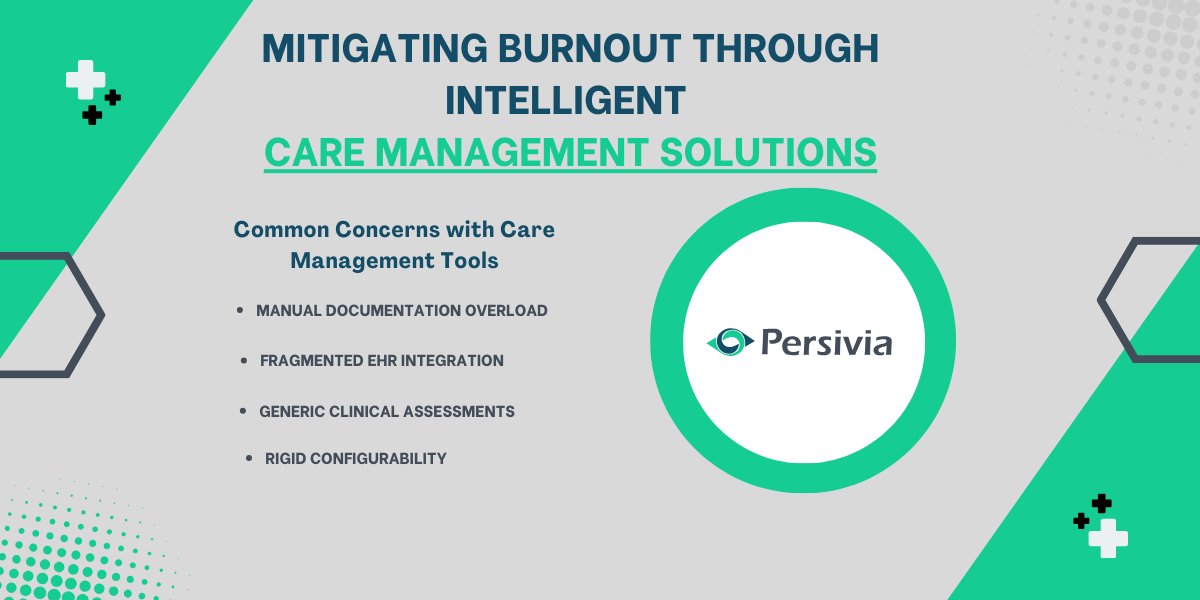
5 Content Marketing Strategies That SaaS Businesses Can Benefit From
In the fast-paced world of technology, content marketing holds the key to success for SaaS companies. Effective content strategies can drive traffic, engage users, and convert them into loyal customers.
However, navigating the world of content marketing can be overwhelming for SaaS businesses as they must market their product effectively so that relevant customers everywhere know about them. Hence, partnering with professional content marketing services can be immensely beneficial. This article will explore five key content marketing services that can help SaaS businesses achieve their goals.
Devising a Solid Content Strategy
A solid content strategy is the foundation of any successful content marketing campaign. It involves creating a roadmap that outlines your goals, target audience, and the type of content that will resonate with them. A reputable SAAS content marketing agency can help you in strategizing, prioritizing, optimizing, creating, and promoting content that generates traffic and converts customers.
Efficient Keyword Research
Content keyword research is crucial in optimizing your content for search engines. By identifying relevant keywords and incorporating them strategically into your content, you can improve your search engine rankings and attract organic traffic to your website. Keyword research helps you understand what your target audience is searching for and enables you to tailor your content accordingly.
Analyzing Competitors’ Content
To stand out in a crowded marketplace, it's essential to understand what your competitors are doing. Competitive content analysis involves researching your competitors' content strategies, identifying their strengths and weaknesses, and finding opportunities to differentiate your content.
Website Content Audit
A website content audit involves evaluating your website's existing content to identify improvement areas. It helps you assess your content's relevance, quality, and performance. You can identify outdated or underperforming content by conducting a thorough audit and make necessary updates or remove it.
Creating a Well-managed Content Calendar
Consistency is key when it comes to content marketing. Creating a content calendar helps you plan and organize your SAAS content creation efforts. It allows you to schedule content releases, set deadlines, and allocate resources effectively. A well-designed content calendar ensures a steady flow of fresh and engaging content that makes your audience return for the latest SAAS-related content.
User Experience Optimization Audit
User experience (UX) is a critical aspect of content marketing. Optimized user experience can significantly impact engagement and conversion rates. A UX optimization audit involves analyzing your website's design, navigation, load times, and mobile responsiveness. By identifying and addressing UX issues, you can create a seamless and enjoyable user experience that encourages visitors to explore your content and take desired actions.
Creating Compelling Content
Once you have a solid content strategy, it's time to start creating content that will rank well in search engines, convert visitors into customers, and expand your brand’s reach.
SEO-focused Content Writing
SEO-focused content writing involves creating high-quality content that incorporates relevant keywords and meets the needs of your target audience. By optimizing your content for search engines, you can improve your visibility and attract organic traffic. SEO-focused content writing also delivers valuable information and engaging storytelling to captivate your audience.
Creating Long-form Guides
Long-form guides are comprehensive pieces of content that provide in-depth information on a specific topic. They offer value to your audience by addressing their pain points and providing actionable solutions. Long-form guides on crucial SAAS topics help establish your authority in the industry, attract backlinks from other websites, and generate leads. Creating well-researched and well-structured long-form guides can significantly boost your content marketing efforts.
Creating Catchy Infographics
Infographics are visually appealing and informative content that presents data, statistics, or complex information concisely and engagingly. They are highly shareable and can attract attention from your target audience and other websites looking to reference your content. Infographics effectively convey information in a visually appealing format, making complex concepts more digestible for your audience. This is highly beneficial for companies dealing in SAAS products.
Creating Fantastic Blog Posts
Blog posts are a staple of content marketing. They provide an opportunity to share timely and relevant information with your audience. Blog posts should be well-written, engaging, and offer valuable insights. They can cover various topics, including SAAS industry trends, best practices, case studies, and how-to guides. Consistently publishing high-quality blog posts on SAAS products and services can help build credibility, establish thought leadership, and drive traffic to your website.
Optimizing the Content
Optimizing your existing content is crucial to ensure it performs well in search engine rankings and resonates with your audience.
Optimizing User Experience
User experience optimization focuses on enhancing the overall user experience on your website. It involves improving website design, navigation, load times, and mobile responsiveness to create a seamless browsing experience. By prioritizing user experience, you can keep visitors engaged, reduce bounce rates, and increase the likelihood of conversions.
Optimizing the Site Structure & Navigation
A well-optimized site structure and navigation are essential for users and search engines. It involves organizing your website's content logically and intuitively, making it easy for visitors to find the information they need. Optimizing site structure and navigation helps search engines crawl and index your content effectively, improving your website's visibility in search results.
Optimizing Internal Links
Internal linking is an important SEO strategy that involves linking relevant pages within your website. It helps search engines understand the hierarchy and relationship between different pages on your site. Internal link optimization improves the user experience by providing additional information and encouraging visitors to explore your SAAS-related content more.
Optimizing Blog & Resource Sections
If your website has a blog or resource section, optimizing it can significantly impact your content marketing efforts. Ensure that your blog and resource sections are well-organized, easily accessible, and offer valuable content to your audience. Optimize these sections by categorizing content, adding relevant tags, and including clear navigation to help users find the information they seek. This will help them understand more about your SAAS products and services.
Optimizing the Keyword
Keyword optimization involves strategically incorporating relevant keywords into your content to improve its visibility in search engine results. Conduct keyword research to identify target keywords and optimize your content accordingly. Ensure that keywords are used naturally and fit within the context of your content. Keyword optimization helps search engines understand the relevance of your content and improves its chances of ranking higher among other SAAS competitors.
On-page Optimization
On-page optimization refers to optimizing various elements on a webpage to improve its visibility and user experience. It includes optimizing meta tags, headings, images, and URLs and ensuring proper formatting and readability. On-page optimization techniques help search engines understand the content and context of your webpage, leading to improved search rankings and user engagement. This will allow customers needing SAAS products to find relevant service providers more easily.
Distributing the Content
Creating great content is only half the battle. To maximize its impact, you must distribute it effectively to reach a wider audience.
Assisting with Link Building
Link building is a crucial aspect of content distribution. It involves acquiring high-quality backlinks from other websites to improve your website's authority and visibility in search engine rankings. Link-building services help identify relevant opportunities for link acquisition, outreach to potential partners, and secure valuable backlinks that drive traffic to your website.
Assisting with Paid Searches
Paid search services, such as pay-per-click (PPC) advertising, can help boost your content's visibility in search engine results. By bidding on relevant keywords, you can display your content prominently when users search for specific terms. Paid search services offer targeted advertising options, precise audience targeting, and measurable results, making them an effective strategy to drive traffic to your website.
Assisting with Paid Social Media Promotions
Paid social services leverage social media advertising platforms to promote your content to a targeted audience. Platforms like Facebook, LinkedIn, and Twitter offer sophisticated targeting options to reach your desired demographic. Paid social services allow you to amplify your SAAS product and service’s reach, engage with potential customers, and generate leads by leveraging social media platforms' vast user bases and targeting capabilities.
Repurposing the Content
Repurposing existing content assets can help you maximize their value and reach a wider audience.
Consolidating the Content
Content consolidation involves compiling related pieces of content into a single comprehensive resource. It helps provide a more holistic topic view and enhances the user experience. By consolidating content, you can create pillar pages or comprehensive guides that serve as go-to resources for your audience and attract more organic traffic.
Improving Existing Content
Regularly updating and improving your existing content can significantly impact its performance. Identify underperforming content and make necessary updates, such as refreshing information, adding new insights, or improving formatting and readability. By continuously improving your existing content, you can maintain its relevance, increase its visibility in search engine rankings, and continue to drive traffic and conversions.
Optimizing Images for Social Media Platforms
Images are crucial in content marketing, especially on social media platforms. Optimizing images for social media involves ensuring they are properly sized, visually appealing, and aligned with your brand. Well-optimized images can increase engagement, shares, and click-through rates on social media, driving more traffic to your content.
Creating Pillar Page Content from Existing Blog Content
Pillar content creation involves identifying and repurposing your top-performing blog posts into comprehensive pillar pages. Pillar pages cover a detailed topic, linking to relevant blog posts for further information. By repurposing your existing blog content on SAAS products into pillar pages, you can create cornerstone content that attracts organic traffic, improves search engine rankings, and establishes your website as an authority in the SAAS industry.
Concluding Thoughts
Content marketing services offer valuable support to SaaS businesses by providing expertise in content strategy, creation, optimization, distribution, and repurposing. By leveraging these services, SaaS businesses can enhance their content marketing efforts, attract a wider audience, and achieve their business goals. Whether it's keyword research, content creation, optimization, or distribution, partnering with professional content marketing services can give your SaaS business a competitive edge in the digital landscape.

Law Firm Management: How Technology is Driving Efficiency

Most Popular Social Networks: Dominating Online Platform







